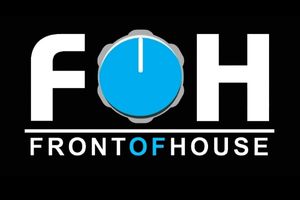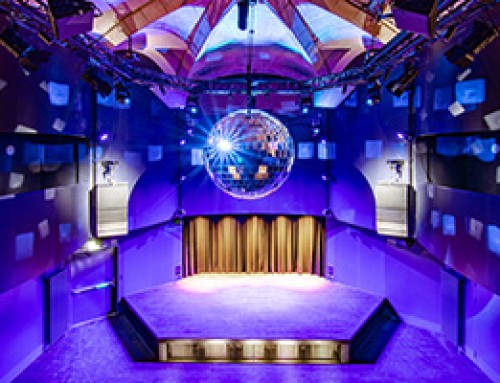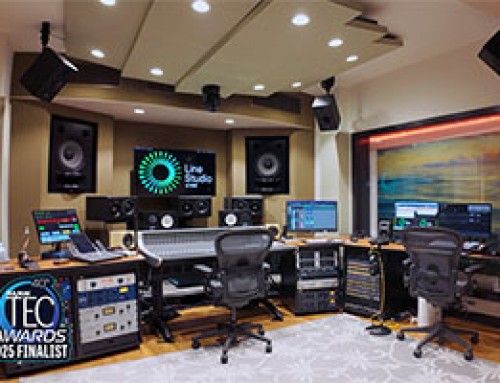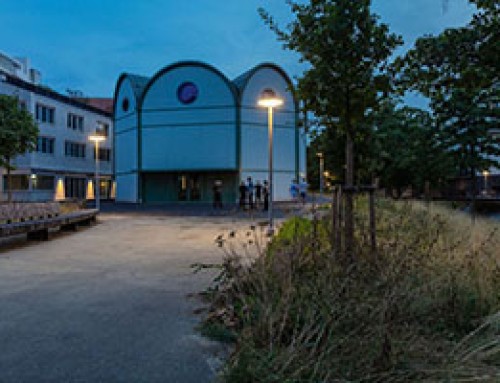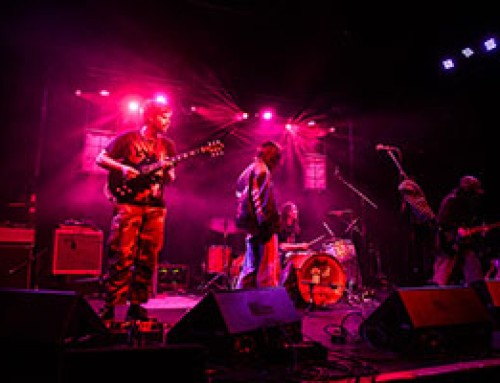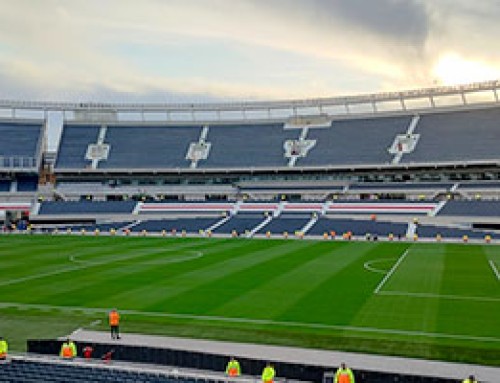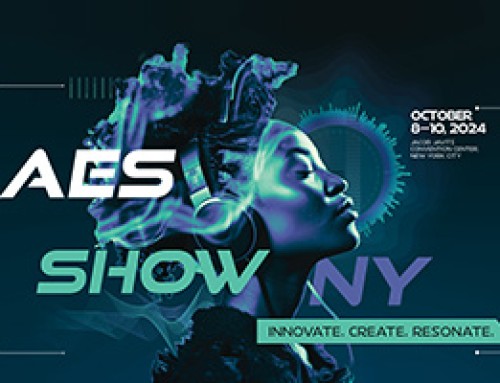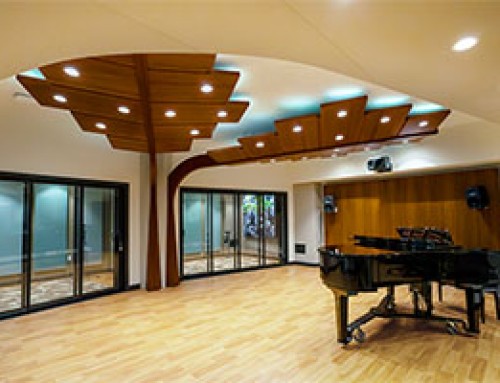MGM Music Hall at Fenway
Boston’s Newest Live Music Venue Sets New Standard for Touring Acts
by Thomas S. Friedman
For many years, superstars ranging from Aerosmith to Pearl Jam, Springsteen, Ray Charles, The Rolling Stones and Stevie Wonder have rocked Boston’s beloved Fenway Park to its rafters with unforgettable centerfield performances. But they couldn’t do that in the winter. In 2019, a team of Fenway Sports Group execs developed a plan for an intimate state-of-the-art live venue. By optimizing the ballpark location with the addition of an indoor theater, they could provide major artists with a world-class stage, providing more than 5,000 Bostonian music fans an incentive to break out of their winter hibernation for live performances by their favorite artists in an exemplary acoustic environment.
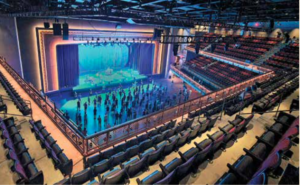
The venue has a main floor with removable seats, a mezzanine and two balconies
The Players & The Plan
After forming a joint venture with Live Nation — and completing negotiations with MGM for naming rights of the newly christened MGM Music Hall at Fenway — all systems were go. DAIQ, a leading Boston-based architectural firm with an enviable track record of designing upgrades to Fenway Park, was the natural choice to conceptualize a ground up building for the new theater.
Walters-Storyk Design Group (WSDG), a global architectural and acoustic design firm, was awarded acoustics, stage design, video systems-integration, and lighting design commissions for the project. WSDG is an 11- time TEC award-winning international firm specializing in architectural acoustic consulting and media systems engineering. Pioneering architect/acoustician, John Storyk (AIA), founded the company in 1969 with the creation of Jimi Hendrix’s Electric Lady Studios in New York City’s Greenwich Village.
Judy Elliott-Brown, long-time WSDG systems conception and integration engineer, worked with a team of systems developers to create a comprehensive proposal for the all-inclusive MGM Music Hall at Fenway systems program.
The plan included recommendations for addressing the full gamut of events, including banquets, conventions, e-sports, large conferences and sports event screenings — e.g., Red Sox Playoff Road Games. The plan also encompassed connectivity to multiple Fenway Park AV Systems via fiber to allow streaming of games and related Park events to and from the MGM Music Hall at Fenway and the ballpark. And it detailed a program to facilitate AV coordination with the 1,200 square-foot multi-for- mat “Function Room” and the “521 Overlook,” the latter being a 7,000 square foot venue above the bleachers, offering sweeping views of the field and ballpark.
Discussing its acoustic design collaboration with WSDG, DAIQ agency principal David Sliwinski remarked, “We had worked with theater consultants on previous projects, but had not collaborated with architectural acousticians. WSDG made several valuable recommendations, which we incorporated in our plans. These included an expansion joint between the theater and Fenway Park, thickness and composition of the perimeter walls, profile/composition of railings facing the stage, fin- ish and make up of walls and ceiling, extent of STC rated doors, critical placement of speakers around the stage and proscenium, and treatment of openings through perimeter walls and surfaces surrounding the stage.”
WSDG also provided AV services, review of mechanical equipment and technical coordination with the electrical engineer and contractor. “They also provided guidelines and testing to meet noise ordinances,” Sliwinski adds. “We found their expertise quite helpful and appreciated their advice. Live Nation was consulted at the original design planning stage and provided input throughout the process. The MGM Music Hall was a terrific experience on all counts. And, we are very pleased with the positive feedback we’ve received from Live Nation, MGM, Fenway Park and the fans,” he concludes.
The Long Haul
Initial progress on the MGM Music Hall at Fenway navigated pandemic-related logistical issues. On the plus side, these delays afforded WSDG design team members the opportunity to consider new technical developments and upgrade original system decisions with newly introduced hardware and software options. By 2022, the entire systems design and integration program had been appreciably revised. These changes included switching to NDI cameras for production video elements to create a VPN for Triple Play feeds to bar site displays and other crowd gathering areas. The ballpark RF distribution systems were interfaced via a tuner and encoder and the original Crestron NVX system for concert video distribution was replaced with a Wyrestorm AV distribution and control system.
Plugging Leaks!
WSDG partner/COO Joshua Morris reports that the acoustics elements of the theater de- sign ensured the MGM Music Hall at Fenway of optimal sound isolation to and from the theater and nearby residences.
“The isolation was precisely engineered to meet the needs of both the programming and the budget,” Morris reports. “Clarity and an even SPL to all seats was achieved by precisely modeling and designing the electroacoustics, thanks to the skills of Gabriel Hauser and our Swiss office team (further advanced by the Clair Global Integration installation team). Lighting design was provided by Chris Barbee, VP of Knoxville, TN-based Bandit Lites, with whom we had the pleasure of collaborating. A significant effort was devoted to HVAC coordination with WSP’s Boston office to ensure a quiet and comfortable environment throughout the complex,” Morris adds.
The System
The P.A. is comprised of 24 Clair Cohesion CO-10 line array enclosures, supplemented by Cohesion C0-8 fills. Twelve Cohesion 218 sub boxes provide ample LF punch. Lab Gruppen power amplifiers were mainly used throughout, with 16 units remotely located in the theater AV rack room, and some QSC CX-Q series amps driving mezzanine club seating and public areas. Surface and ceiling speakers in the public areas are QSC and Clair.
The console lineup includes Avid VENUE S6L-48D (FOH) and S6L-32D (monitor), an Al- len & Heath SQ-5 (production) and a Yamaha QL-1 with a RIO 1608D stagebox (portable). Wireless and hardwire mics include familiar models from Shure, Sennheiser, DPA, Neumann and Electrovoice, along with a selec- tion of Radial Engineering direct boxes.
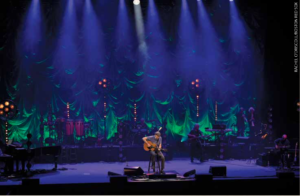
Some 5,000 lucky fans on opening night were treated to “An Evening with James Taylor”
Success!
Parnelli Award-winning FOH engineer David Morgan mixed “An Evening with James Taylor,” the venue’s grand opening show. “We had a great time,” Morgan recalls. “Besides the permanently installed Clair Cohesion-10 P.A., all the subwoofers, front fills, balcony and under-balcony fills were familiar Clair Global products, and we were pleased with the warm but still well-articulated audio coming from those enclosures. The venue has been constructed so every seat is a good seat. We look forward to going back.” Audiences too, expressed their appreciation of this precisely tuned venue. “Advances in acoustic treatments and innovative computer design software programs have proved indispensable in this task, offering the ability to literally experience the sound qualities of a performance space while it is still in the design stage,” says Morris, “This also helps identify and correct potential problems before the walls are built. Such technical miracles have literally transformed our industry. Acousticians are more accurate today than ever before. We’re not only creating better sounding rooms, we are also saving time and money in the process.”
Links

